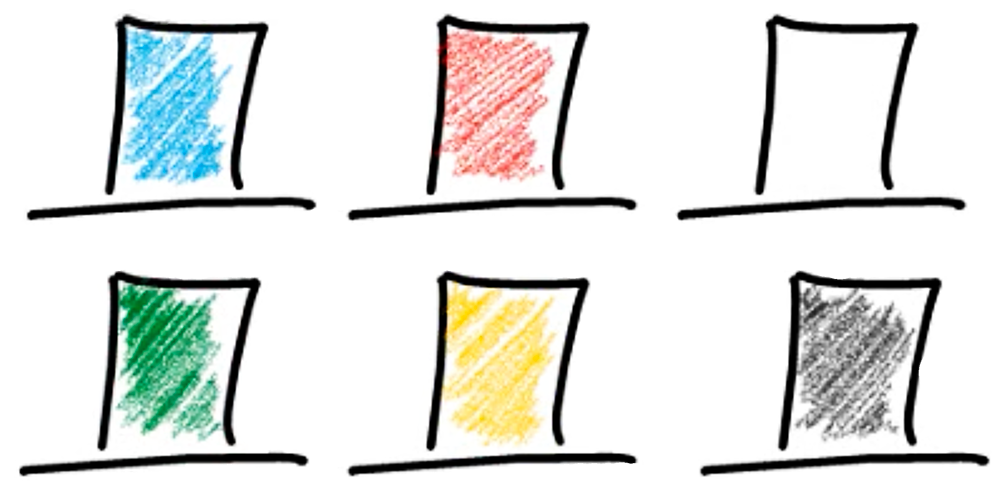Creative thinking in accounting education

Last month saw the IgNobel awards for “achievements that first make people laugh, then make them think”. My personal recent favourite is the 2019 award to economics researchers who tested which country’s paper money is best at transmitting dangerous bacteria.
It’s precisely this ‘silly but serious’ theme that struck me when I came across a paper about creative thinking in accounting education by Bonk & Curtis (1998). Critical thinking is often on our radars but creative thinking maybe not so much. When I was a relatively inexperienced teacher I thought accounting educators should stick to teaching the rules. I wasn’t aware of the role that creativity can play. Over the years I’ve come to realise that creativity supports the development of critical thinking skills.
For teachers and accountants, especially those of us who are set in our ways, creativity opens up new perspectives and new ways of doing things. And, for students who may be afraid to give a wrong answer, creativity gives them permission to think differently and express their ideas. Here I highlight three ideas that I use in my classes from Bonk & Curtis.
“Reverse brainstorm”
Reverse brainstorming is an adaptation of brainstorming and involves asking students to address a nonsense scenario. A traditional brainstorming exercise might require a class to consider how to reduce costs per patient in a local hosital. In reverse brainstorming, the question is reversed: “What can be done to increase the costs of a local hospital?” The question is fun and gives students permission to play. They know it isn’t something they would be asked in real life, and it therefore liberates them to come up with wild ideas.
“Six Hats” thinking
Six Hats is based on Edward de Bono’s “Six Thinking Hats”. A white hat focuses on information and facts, a red hat deals with hunches and emotions, a green hat signals energy for creative proposals and alternatives, a black hat is for judgment and preventing dangerous actions, a yellow hat represents sunshine and optimism, and a blue hat overviews the whole process.
This idea can easily be extended and adapted, perhaps with the teacher assigning everyone in class a “thinking-related role”, for example summarizer, connector, judge, devil’s advocate, arguer, idea squelcher, questioner, adventurer, protestor, or idealist.
I have found that this frees students to think differently about common situations. It’s fun to play, and on a serious note, you will often be playing the role of questioner ‘playing’ against other roles such as optimists or idealists.
Working backwards
Working Backwards requires students to work from a solution or terminal situation—a bit like the board game “Guess Who?”. For example, “I am a particular ratio, can you guess which one I am?”. Students might ask what the ratio attempts to explain, what the input variables are, or perhaps typical values for a specific industry. The teacher might choose to make it more difficult by providing only “yes” or “no” replies.
This is an effective way to motivate students to scaffold their memory—they know the rules and they find it a fun game to play. This idea has also been developed into a number of cases (Bujaki & Durocher, 2012, Crook et al. 2019, Desai et al. 2018, Shette, 2020).
All three ideas effectively combine fun with serious learning. Importantly, they don’t have any cost implications for your school or your students. I teach at a community college where some students struggle to pay for food and rent, so this is a significant consideration.
These activities can be done in a face-to-face environment as well as online, or even asynchronously. This gives you the flexibility to adapt these exercises for almost any teaching environment.
How do you encourage creative thinking in accounting education? Are you discussing non-conventional topics, or maybe teaching in non-conventional ways? Maybe you dress up as a pirate? Or are you using some other silly but serious way to teach accounting? Let us know in the comments below.
About the author
Agatha Engel has been teaching in the US and Europe for the past 15 years. She likes to make accounting meaningful for her students and, if possible, a fun experience. She achieves this by bringing practice and theory together in realistic cases and exercises.
Agatha recently received the “Short Case Award” from the AICPA (American Institute of Certified Public Accountants).
References and further reading
Bonk, C. J., & Smith, G. S. (1998). Alternative instructional strategies for creative and critical thinking in the accounting curriculum. Journal of Accounting Education, 16(2), 261-293. Available at: https://doi.org/10.1016/S0748-5751(98)00012-8.
Bujaki, M., & Durocher, S. (2012). Industry Identification through Ratio Analysis. Accounting Perspectives, 11(4), 315-322. Available at: https://doi.org/10.1111/1911-3838.12003.
Crook, Matthew, Mark Griffiths, and Brian Walkup. “The Case of the Unidentified Energy Companies.” Journal of Finance Case Research, Vol. 18, No. 1 (2018/2019): 25-35. Available at: https://scholarship.rollins.edu/as_facpub/260/. Accessed 10 October 2022
The de Bono Group LLC, Six Thinking Hats. Available at: https://www.debonogroup.com/services/core-programs/six-thinking-hats/. Accessed 10 October 2022
Desai, M.A., Fruhan, W.E., Fan, L., Bhatia A. (2018), The Case of the Unidentified Industries-2018, as published by Harvard Business School, 2 pages, Product #: 219046-PDF-ENG, https://hbsp.harvard.edu/product/219046-PDF-ENG. Accessed 10 October 2022
IgNobel Awards, 2022, Reprorted by Ars Technica. Available at: https://arstechnica.com/science/maya-ritual-enemas-and-constipated-scorpions-the-2022-ig-nobel-prize-winners/. Accessed 10 October 2022
Shette, R. (2020). The Case of the Unidentified Companies From India. In SAGE Business Cases. Indian Institute of Management, Kozhikode. Available at: https://dx.doi.org/10.4135/9781529751956
This is part of the Pedagogy series of articles
© Accounting Cafe



